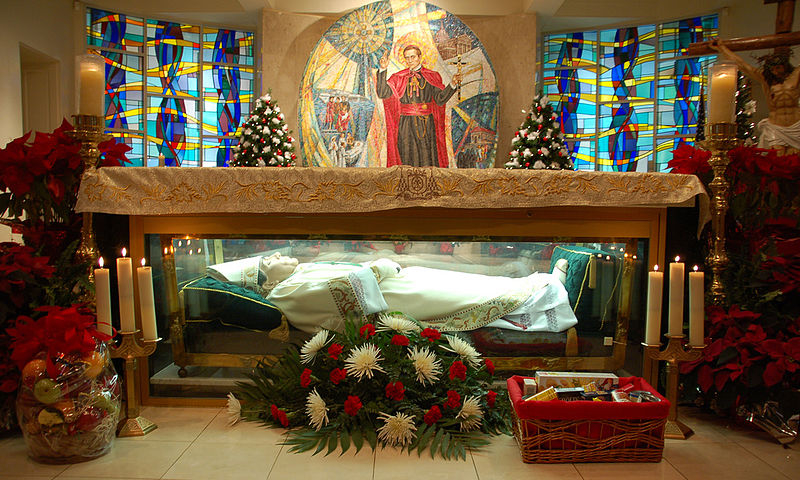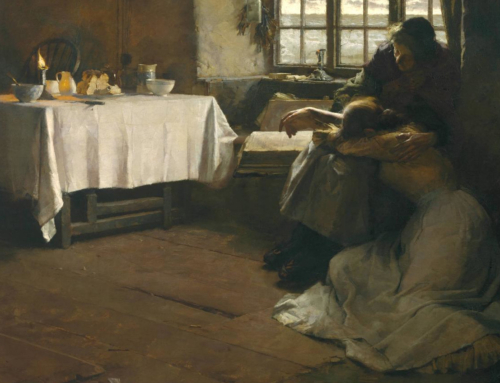People realize that something strange is going on with Catholic altars when they visit a church that has the full body of a saint in a glass case beneath the stone slab. Saint John Neumann’s shrine in Philadelphia (pictured above) is a good example of this. It’s like an open-casket wake that never ends. Not only does this practice reveal something about the Catholic understanding of the body, it makes clear the somewhat shocking truths about all Catholic altars: every altar is a place of death.
Our altars have their roots in the Jewish altar in the Temple. The altar in the Temple, according to the laws of Torah, was a place marked by sacrifice and blood and fire. There the priests made the different offerings that God had instituted as constitutive of the covenant with his people. It must have often been a messy, smelly place, but it is where God chose to have his people worship and make atonement for their sins.
In the Last Supper, Jesus institutes a new sacrificial system. He offers himself, once for all, in the unbloody sacrifice of the Eucharist. He ties together the full meaning of the history of the chosen people—the Exodus, the sojourn in the desert, the promise of fruitful land—into one great sacrament that makes present the fulfillment of all these realities. And he does this in the context of a meal among friends.
The Catholic altar follows upon both mysteries: place of sacrifice and place of meal. As the Catechism puts it, “The altar, around which the Church is gathered in the celebration of the Eucharist, represents the two aspects of the same mystery: the altar of the sacrifice and the table of the Lord” (CCC 1383). Furthermore, as a place of encountering the Lord in the celebration of the Eucharist, the altar itself becomes a representative of Christ: “What is the altar of Christ if not the image of the Body of Christ?” asks St. Ambrose.
Why, then, does the Church have the practice of placing relics of saints, whether small pieces or full bodies, beneath altars? On the symbolic level, there is a profound unity between the saint and the altar. The altar, an image of Christ, holds the physical remains of those who took on the form of Christ in their earthly life—suffering, dying, and now, thanks to God’s generosity, living again with him. We can look on the body of the dead saint without fear because they faced death and triumphed by being united with Christ’s victory over death. By our reverence and faithfulness to the altar and the perfect Sacrifice that adorns it every day, may we do the same.
✠
Photo by Dgf32 (CC BY-SA 3.0)







